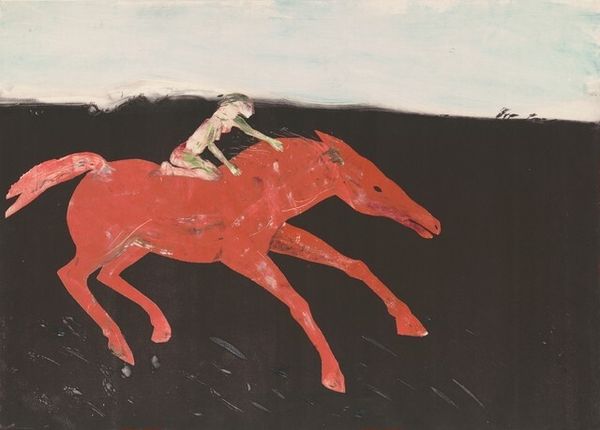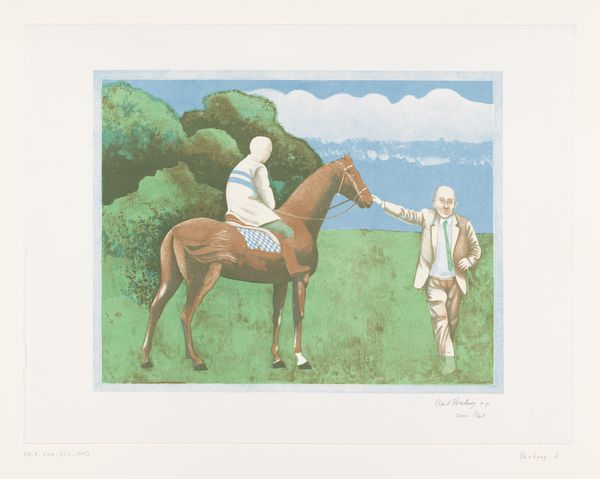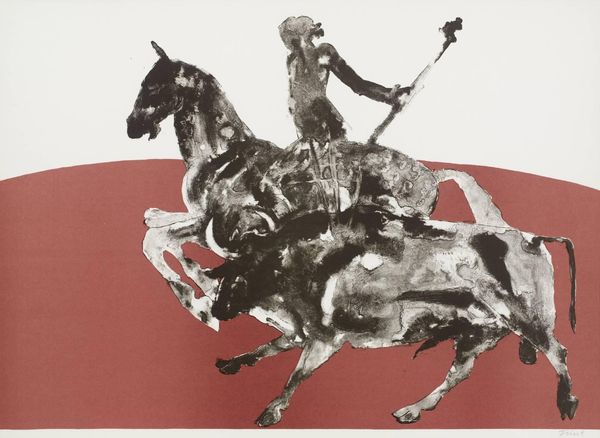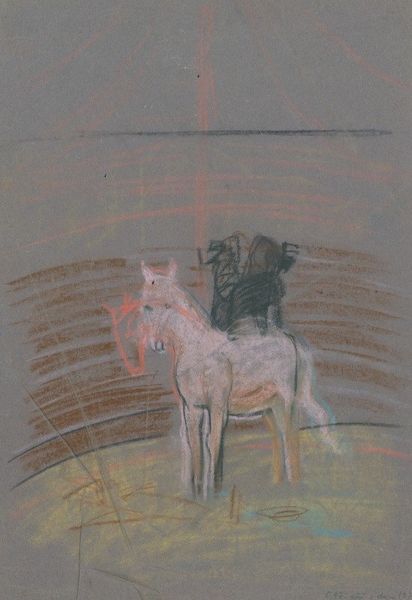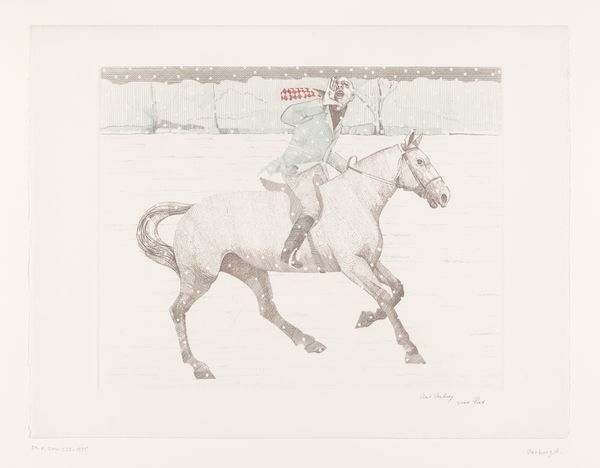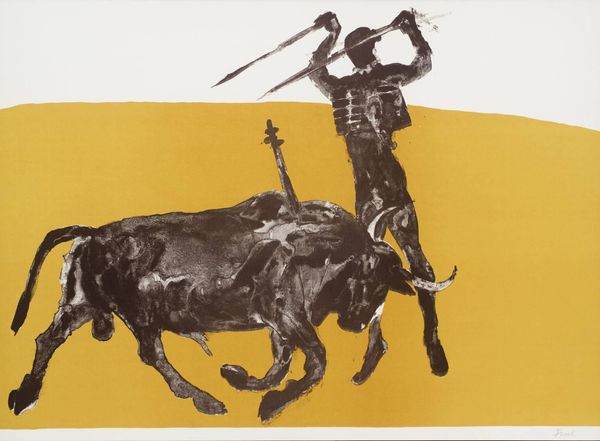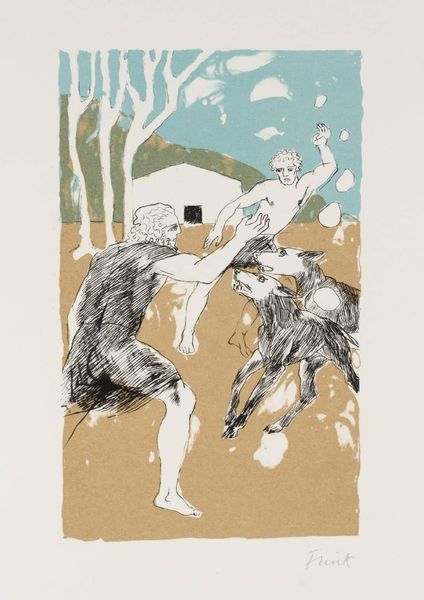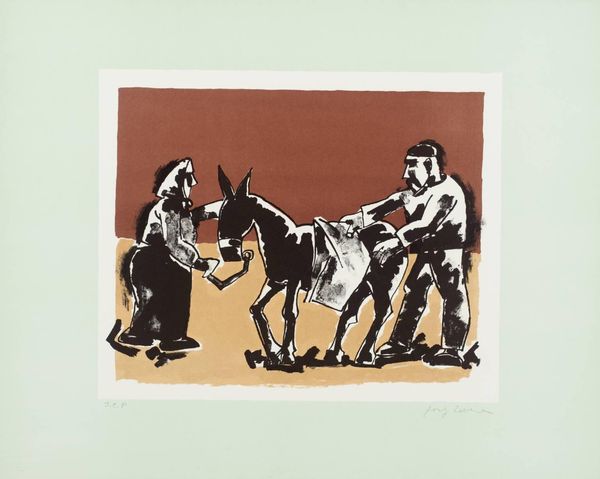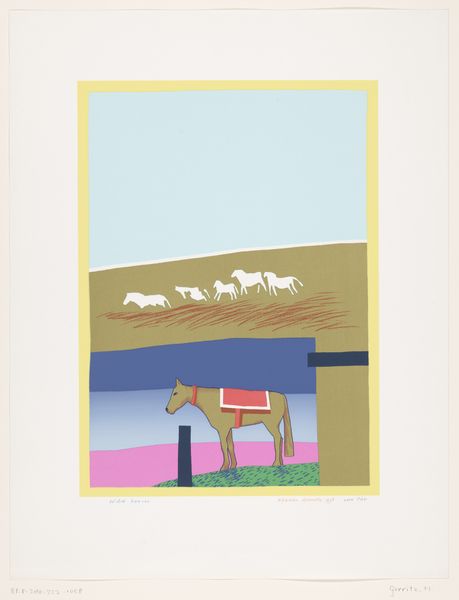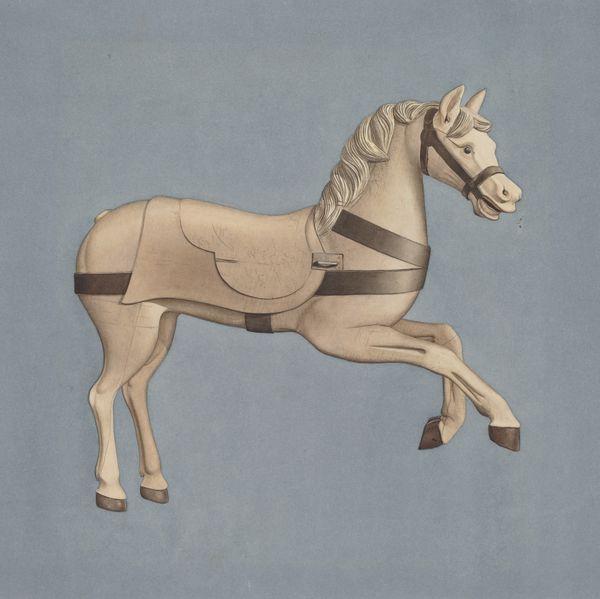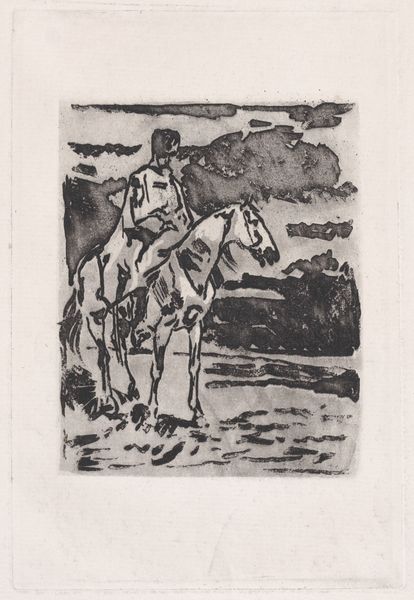
graphic-art, print
#
graphic-art
# print
#
landscape
#
figuration
#
line
#
modernism
Dimensions: height 570 mm, width 768 mm, height 500 mm, width 503 mm
Copyright: Rijks Museum: Open Domain
Editor: Here we have "Paarden en pijlen," or "Horses and Arrows," a print by Aat Verhoog from before 2009. It’s held here at the Rijksmuseum. The graphic quality is immediately striking; it has this stark, almost confrontational energy. How do you interpret this work? Curator: This piece grabs you, doesn't it? I see a potent visual commentary on power dynamics. The hybrid figure, half human, half horse, is literally pointing towards the pure horse form across a divide. That red arrow connects them, yet also signifies a unidirectional force. What do you make of the arrow, its red colour, and the direction in which it is pointing? Editor: I see it as tension, maybe aggression? But I also wonder about communication or maybe a loss of control? Is the artist implying a critique of humanity’s relationship with nature, or perhaps with itself? Curator: Precisely. Verhoog is situating the artwork at an intersectional point: How do we use communication to empower ourselves while exerting dominance over our natural surroundings? Think about how "landscape" art has historically been used to justify ownership or act as a backdrop to narratives of control. Editor: I never considered that, but now the black field beneath, like tilled earth or perhaps something more ominous, adds another layer. Is he commenting on modernism’s fraught relationship with the land? Curator: Exactly! By using strong modernist lines and abstraction, he distances himself from any romanticisation. The lack of a definitive horizon and the contrasting use of earthy colour could imply something sinister bubbling beneath a tranquil surface. Consider that these are "Paarden en Pijlen" from an artist born during wartime. Do the arrows now signal an anticipation of violence? Editor: I can see how his background might inform such an interpretation, now. It makes me think differently about the piece and its meaning, especially with how the figure seems to stand for modern conflict itself! Thank you. Curator: And thank you! That's the beauty of art, isn’t it? Shifting perspectives reveals layers we might have otherwise missed.
Comments
No comments
Be the first to comment and join the conversation on the ultimate creative platform.
